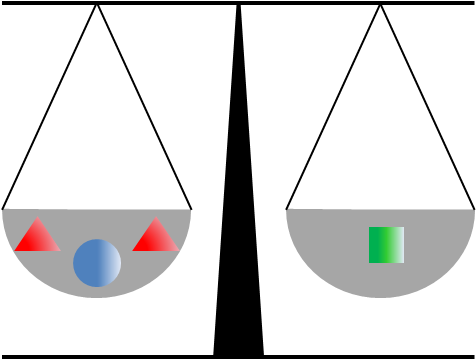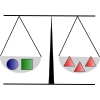Skip over navigation

Two pyramids and a sphere on one side of a pair of scales will just balance a cube on the other side.

A sphere and a cube together will just balance three pyramids.
How many spheres will just balance a single pyramid?


Or search by topic
Number and algebra
Geometry and measure
Probability and statistics
Working mathematically
Advanced mathematics
For younger learners
Weighing Scales
Age 14 to 16
ShortChallenge Level 





- Problem
- Solutions

Two pyramids and a sphere on one side of a pair of scales will just balance a cube on the other side.

A sphere and a cube together will just balance three pyramids.
How many spheres will just balance a single pyramid?
If you liked this problem, here is an NRICH task which challenges you to use similar mathematical ideas.
This problem is taken from the UKMT Mathematical Challenges.
You can find more short problems, arranged by curriculum topic, in our short problems collection.
You may also like
First Forward Into Logo 6: Variables and Procedures
Learn to write procedures and build them into Logo programs. Learn to use variables.
First Forward Into Logo 8: More about Variables
Write a Logo program, putting in variables, and see the effect when you change the variables.

